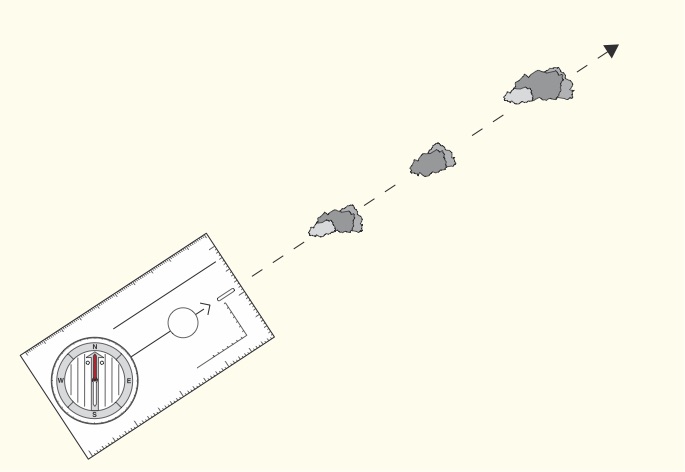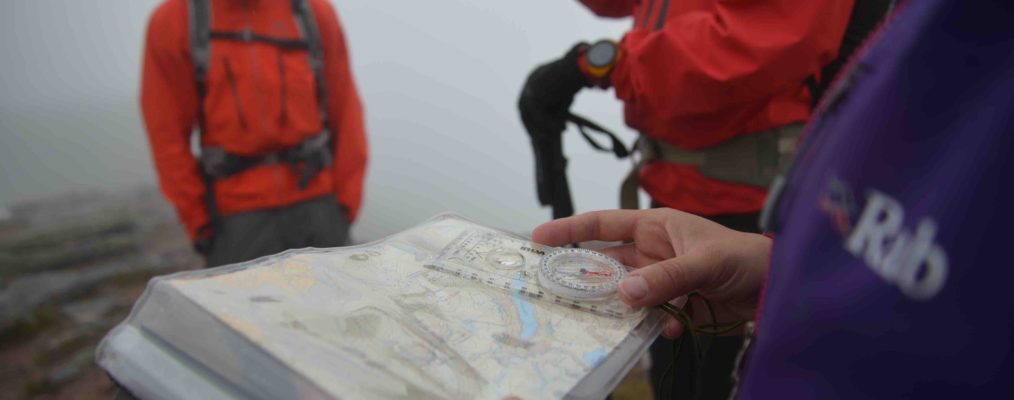
Following a bearing from point to point
Hold the compass firmly in your hand in front of your body, making sure that there are no metal objects nearby. Rotate yourself until the needle sits in the correct manner over the arrow on the bottom of the housing, ensuring that you have the north end of the needle, often painted red, over the pointed part of the arrow. Now look along the direction of travel arrow on the front of the baseplate and note a feature along your bearing (not too far away and on your side of the objective), perhaps a rock or large clump of grass. You can now walk to that point, stop, let the compass needle settle and repeat the process. As long as you travel from point to point like this, you will always stay on your original bearing until your objective comes into view.
Following a bearing while moving
This takes some practice to get right, but is useful if you need to get off the hill or from A to B with speed. Only try this method once you are completely happy with the stop-start method mentioned above. From your starting point sight a feature as normal, and walk towards it. As you get closer let your compass needle settle into the correct position over the housing arrow, line yourself up so that the direction of travel arrow points at the feature, look beyond it and identify another. You can now ignore the first feature and move on to the second. This is repeated until you arrive at your objective.
Although a very efficient way of moving, accuracy is the important thing here, so if you need to stop to double-check a feature then do so, otherwise you could wander some way off target.
Following a bearing in blanket snow
Some conditions, such as wide snow cover when the cloud is down, will stop you from identifying obvious features to walk to. If you are on your own, you may be able to discern individual ice crystals just a very short distance away, perhaps just a couple of metres, and use these. Alternatively, making a snowball and throwing it ahead so that it makes a mark on the ground will help and you can walk to it and stand the appropriate distance one side or the other so that you are still on your bearing.
If there are two or more of you, you can use each other as markers. One of you stands at the start point whilst the other walks out ahead for an appropriate distance, most likely pacing (covered below). Once they have stopped they turn round and use you as the marker point. To do this, they hold their compass back to front so that it is 180 degrees out, and line themselves up with you by moving left or right, keeping the north end of the needle over the south end of the arrow on the housing, and using the direction of travel arrow to line up on you. They do not change the bearing at all, but simply rotate the compass in their hands. Once they are happy that you are both lined up they can give you a wave and you can join them.
This process is quite slow but it is the only option when there is limited visibility and no ground features can be seen. The advantage is that there are two of you checking each other’s bearings and pacing distances, making it quite accurate. As soon as ground features are seen you should use them, as this will speed things up considerably.
Words: Pete Hill Pictures: Pete Hill, Chris Kempster






